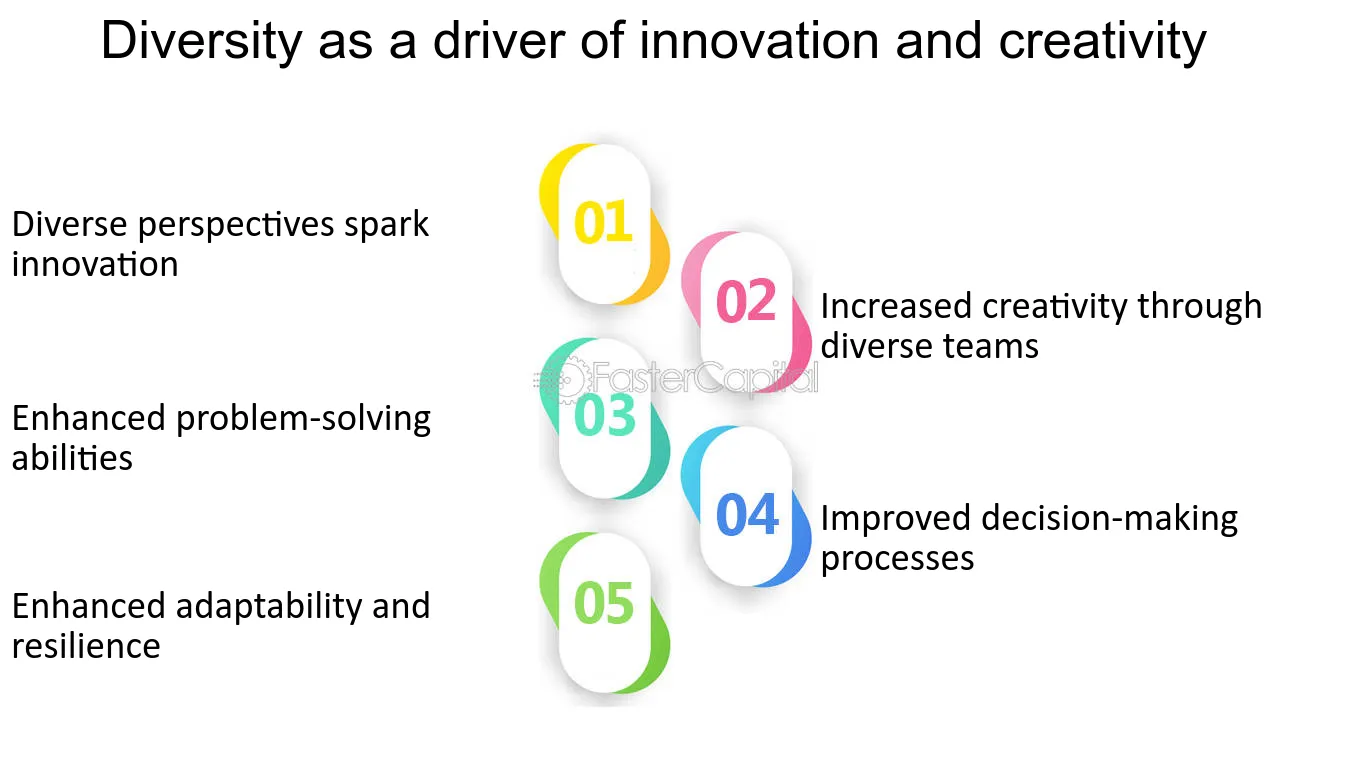Physical Address
304 North Cardinal St.
Dorchester Center, MA 02124
Physical Address
304 North Cardinal St.
Dorchester Center, MA 02124

In the ever-evolving landscape of technology, the role of diversity in problem-solving has gained significant recognition. Technical masterminds, responsible for shaping the digital future, are realizing the profound impact of diverse teams on their problem-solving capabilities.
This article delves into the intricate relationship between diversity and problem-solving prowess within the realm of technology, exploring how a mix of perspectives, backgrounds, and experiences can drive innovation and create more robust solutions.
Diversity in a technical context goes beyond the traditional parameters of race and gender. It encompasses a spectrum of characteristics, including but not limited to educational backgrounds, experiences, skills, and even thinking styles. A diverse team may include individuals with different academic disciplines, industry backgrounds, and cultural perspectives, fostering a rich tapestry of ideas.
Research consistently highlights the advantages of diversity in the workplace, especially in the tech industry. Diverse teams bring a wide array of skills, knowledge, and problem-solving approaches to the table. This variety is a catalyst for creativity, innovation, and improved decision-making. In the context of technical problem-solving, the amalgamation of diverse skills often leads to more comprehensive solutions.
Cognitive diversity refers to the differences in how individuals perceive, think, and problem-solve. In a technical setting, cognitive diversity becomes a powerful tool for innovation. Technical masterminds benefit from team members who approach challenges from various angles, drawing on their unique cognitive strengths.
Homogeneous teams may fall victim to cognitive biases, such as groupthink, where members conform to prevailing opinions rather than critically evaluating ideas. In contrast, a cognitively diverse team is more likely to challenge assumptions, question established norms, and explore unconventional solutions, fostering a more dynamic problem-solving environment.
A diverse team encompasses individuals with a broad range of skills acquired through different educational and professional journeys. Technical masterminds can leverage this diversity to assemble a team with complementary skills, filling gaps and ensuring a more holistic approach to problem-solving.
Diverse teams often cultivate a culture of continuous learning. Members from various backgrounds share their knowledge and experiences, fostering an environment where technical masterminds can stay abreast of the latest developments in their field. This commitment to lifelong learning enhances problem-solving capabilities by incorporating the most up-to-date knowledge and tools.
Cultural diversity within a technical team introduces a rich tapestry of perspectives and problem-solving approaches. Different cultural backgrounds bring unique viewpoints, enabling technical mastermind to view challenges through multiple lenses. This diversity in thought is a breeding ground for creative solutions that may not have surfaced in a more homogeneous environment.
Cultural diversity can also break down communication barriers. Technical teams often collaborate on a global scale, and understanding the nuances of communication across diverse cultures is essential. A team well-versed in navigating cultural differences is better equipped to communicate effectively, leading to more efficient problem-solving processes.
Creating an inclusive environment is crucial for unlocking the full potential of diverse teams. Inclusivity ensures that every team member feels valued and heard, encouraging active participation in problem-solving discussions. Technical masterminds must foster an atmosphere where diverse perspectives are not only welcomed but actively sought.
Unconscious bias can impede the effectiveness of diverse teams. Technical leaders need to be vigilant in identifying and mitigating unconscious biases that may influence decision-making processes. Training programs and policies that promote inclusivity can contribute to creating a fair and unbiased work environment.
Microsoft, a global technology giant, has embraced diversity as a driving force behind innovation. The company’s diverse workforce contributes to the development of products that cater to a wide range of users. Through initiatives like the AI for Accessibility program, Microsoft demonstrates how diverse perspectives can lead to groundbreaking solutions, particularly in addressing challenges faced by people with disabilities.
Google’s approach to diversity extends beyond hiring practices to its project teams. The company values cross-functional teams with members possessing varied skills and backgrounds. This approach has been instrumental in the success of projects like Google Maps, where engineers, designers, and anthropologists collaborated to create a more user-centric and culturally sensitive product.
Despite the evident benefits, some organizations may encounter resistance to embracing diversity. Resistance can arise from individuals uncomfortable with change or those clinging to outdated notions. Technical leaders must address these concerns through education, open communication, and highlighting the tangible advantages of diversity.
To ensure the success of diversity initiatives, organizations should implement inclusive policies that go beyond recruitment practices. Inclusive policies may include mentorship programs, diversity training, and flexible work arrangements that accommodate different lifestyles and needs.
As technology continues to advance, the challenges facing technical masterminds become increasingly complex. Navigating these challenges requires a diverse set of skills, perspectives, and approaches. The future of diversity in technical problem-solving lies in its ability to adapt and evolve alongside the ever-changing technological landscape.
To fully realize the potential of diversity in technical problem-solving, organizations must go beyond tokenistic efforts and embrace diversity as a core value. This involves creating a culture that values and celebrates differences, fostering an environment where individuals from all backgrounds feel empowered to contribute their unique insights.
In the dynamic world of technology, where innovation is the driving force, diversity emerges as a key determinant of success. Technical masterminds, responsible for shaping the digital future, are increasingly recognizing the transformative power of diverse teams in problem-solving.